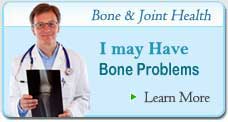» Anti-Aging
» Bones Joints & Muscle Health
» Cardiovascular Health
- Hip And Knee Joint Replacements: The Infection Risks
- All About Excessive Sweating & How To Stop Hyperhidrosis Sweats Ruining Your Life
- Should You Be Worried About Diabetic Retinopathy? Find Out If You Are Developing & How To Prevent It
- Must Know Lyme Disease Information - You Might Be Surprised To Find Out...
- Do You Have Sleep Apnea? Find Out What It Is And How To Treat It
» Chronic Pain Management
» Dental Health & Wellness
» Digestive Health Problems
» Health Care
» Mental Health
» Sexual Health
» Skin Care

Deep Vein Thrombosis – Causes and Treatments
Deep venous thrombosis (DVT) refers to a blood clot embedded in one of the major deep veins of the lower legs, thighs or pelvis. A clot blocks blood circulation through these veins, which carries blood from the lower body back to the heart.
The blockage can cause pain, swelling or warmth in the affected leg. Blood clots in the veins can cause inflammation called thrombophlebitis.
Severe complications of deep vein thrombosis occur when a clot breaks loose and travels through the bloodstream, causing blockage of blood vessels in the lung.
| Rating | Recommended | Description | Review | ||
|---|---|---|---|---|---|
 |  | Purpurex Bruise Reducer Skin Health Benefits
| Find Out More |
Called pulomary embolism, this can lead to severe difficulty in breathing and even death, depending on the degree of blockage.
In the United States, about 2 million people per year develop deep vein thrombosis. Most of them are aged 40 years or older. Up to 600,000 are hospitalized each year for the condition.
Deep vein thrombosis can lead to a more serious complication, blood clots in the lung.
More than 650,000 people die each year from pulmonary embolism, making it the third most common cause of death in the United States.
Deep Vein Thrombosis Causes
Three factors that may lead to a formation of a clot inside a blood vessel.
- Damage to the inside of a blood vessel due to trauma or other conditions
- Changes in normal blood blow, including unusual turbulence, or partial or complete blockage of blood flow
- Hypercoagulability, a rare state in which the blood is more likely than usual to clot.
Any component that contributes to one or more of these criteria can cause deep vein thrombosis. The more common risk factors are as follows:
- Prolonged sitting, such as during a long plane or car ride
- Prolonged bed rest or immobility, such as after an injury or during illness (such as a stroke)
- Recent surgery, particularly orthopedic, gynecologic, or heart surgery
- Recent trauma to the lower body, such as fractures of the bones of the hip
- Obesity
- Heart attack or heart failure
- Recent childbirth
- Being at a very high altitude, greater than 14,000 feet
- Use of estrogen (Hormone replacement therapy) or birth control pills
- Rare inherited genetic changes in certain blood clotting factors
- Advanced Age
When to seek Medical Care
Call the health care practitioner immediately if a clot is suspected.
- Although a deep vein thrombosis may resolve on it’s own, the life-threatening consequences of a clot reaching the lung, called pulmonary embolism, are severe enough to warrant seeking medical attention immediately
- The health care practitioner may tell the patient to go immediately to a hospital emergency department
If a person has leg pain or swelling with any risk factors, go to a hospital emergency department immediately.
Call 911 if you or someone you know with a current deep vein thrombosis , previous deep vein thrombosis, or risk factor begins having chest pain, shortness of breath, difficulty breathing, fainting, or any other symptom that concerns you.
Deep Vein Thrombosis Medical Treatment
The treatment of blood clots depends on their location in the body.
Most commonly, though, anti coagulation or blood thinning medication is prescribed to prevent further clot formation and to minimize the risk that part of the blood clot will break off and travel to the lung.
Treatment of deep venous thrombosis in the leg is often individualized for each patient depending upon the clinical situation and other medical conditions that may be present.
Anti coagulation is the treatment of choice and is a two stage process.Low molecular weight injections are started to begin immediate blood thinning. Warfarin is prescribed (an anti coagulation drug) to anti coagulate the blood.
If possible, the treatment of uncomplicated deep venous thrombosis in an individual is accomplished as an outpatient. Education is provided to the patient and the family to teach them how to administer the injection, and the patient is advised to return to the family physician for appropriate monitoring.
Some patients will need to be admitted to the hospital if they have significant underlying medical illnesses, are pregnant, or are unable to administer injections.
The duration of anti coagulation therapy depends upon the circumstances that led to the development of the blood clot.
If there were temporary risk factors, for example a long road trip or recent immobility of injury or illness, treatment may last 3-6 months. However, if the cause is unknown or if there is a recurrent clot, medication may be required for more than 12 months.
Not all DVT’s require anti coagulation.
Because small clots located in veins below the knee have a low risk of embolizing to the lung, it is possible to observe the patient. Using serial ultrasound tests of the veins, the clot can be monitored to see whether it is extending and growing or whether it is stable and needs no further treatment.
Similar situations can exist in the arm. DVT’s above the elbow are usually treated with blood thinner medications as described above, while clots in the subclavian vein, located just below the collarbone, may be considered for thrombolyctic therapy.
Because of underlying medical conditions, some people may not be able to take anticoagulation medications and may require an alternative treatment instead of medication.
Those who have gastrointestinal bleeding (bleeding from the stomach or bowel), intracranial bleeding (bleeding in the brain), or who have recent major trauma could potentially bleed to death if anti coagulants medications are prescribed.
The alternative for leg DVT treatment in these instances may be an inferior cava filter.
The vena cava is the large vein that collects blood from the lower body just before it enters the heart. A filter can be placed into the vena cava to trap any clots that might break off and prevent them from travelling to the heart and then to the lungs.
Compression stockings are useful in preventing a complictaion of a leg blood clot called postthrombotic syndrome, in which the leg swells and becomes chronically painful.
These stockings may be purchased over-the-counter or can be custom fitted. It is recommended that they be worn for at least a year after the diagnosis of deep venous thrombosis.
You May Also Find Informative:
Aging Fit - Health Research & Information
Better Health. Energy. Quality.






